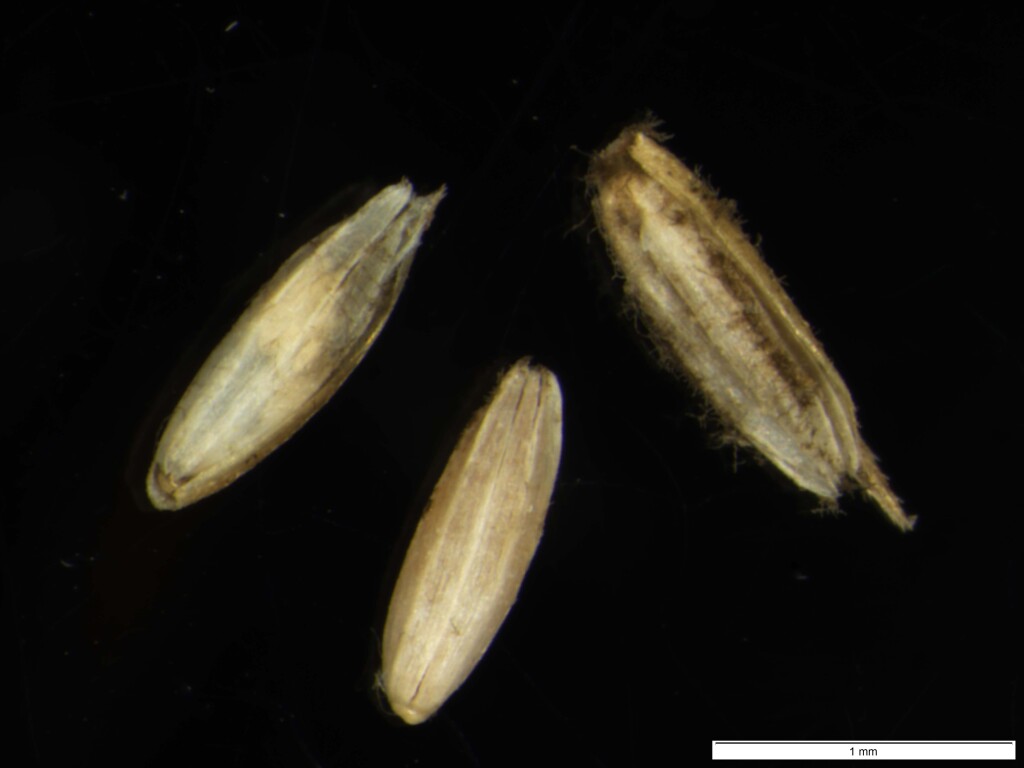Agrostis parviflora
R.Br.Tufted glabrous annual, culms erect, to 30 cm high. Leaf-blades flat, folded or filiform, to 10 cm long and 1.5 mm wide; ligules obtuse, 0.5–1.5 mm long. Inflorescence an open panicle, to 9(–12) cm long and 5(–8) cm wide, the branches initially ascending but soon divaricately spreading, longest branches rarely more than 3 cm (and often less than 2 cm) long. Spikelets 1.5–2 mm long, green or purplish; glumes acute, subequal or the lower slightly longer, keeled, smooth or scabrous along the upper part of the keels; lemma subequal to the spikelet, glabrous, awnless; palea absent or minute (less than one-fifth as long as lemma); anthers 0.3–0.5 mm long. Flowers Dec.–Mar.
GipP, CVU, EGL, EGU, HSF, HNF, OtR, Strz, MonT, HFE, VAlp. Also NSW, Tas. Occasional in damp grassland and wetter alpine heaths throughout the snowfields, uncommonly also in wet shaded sites of lowland to montane forests.
Specimens from low to mid-altitude sites tend to be lankier plants that retain a relatively contracted inflorescence until maturity, whereas those from alpine sites have the branches widely spreading soon after anthesis. This may be ecotypic variation, or the lower-altitude plants may warrant formal recognition following further research.
Walsh, N.G. (1994). Poaceae. In: Walsh, N.G.; Entwisle, T.J., Flora of Victoria Vol. 2, Ferns and Allied Plants, Conifers and Monocotyledons, pp. 356–627. Inkata Press, Melbourne.
 Spinning
Spinning

